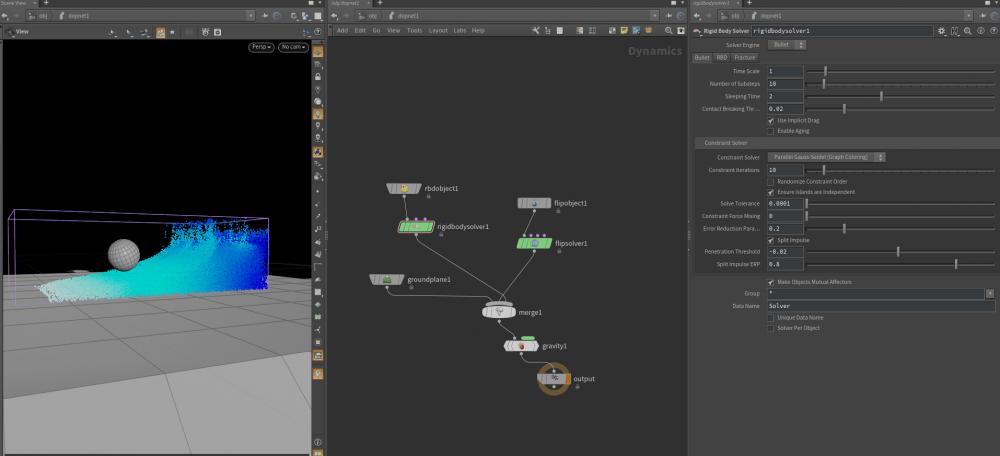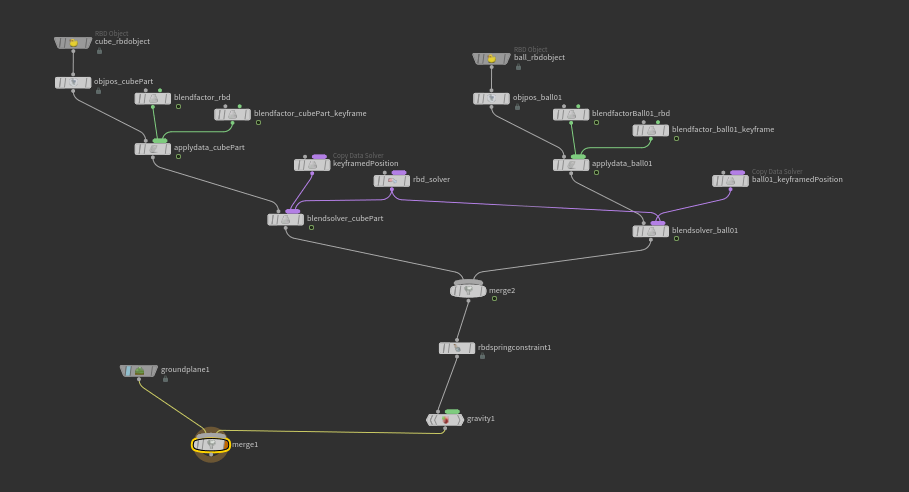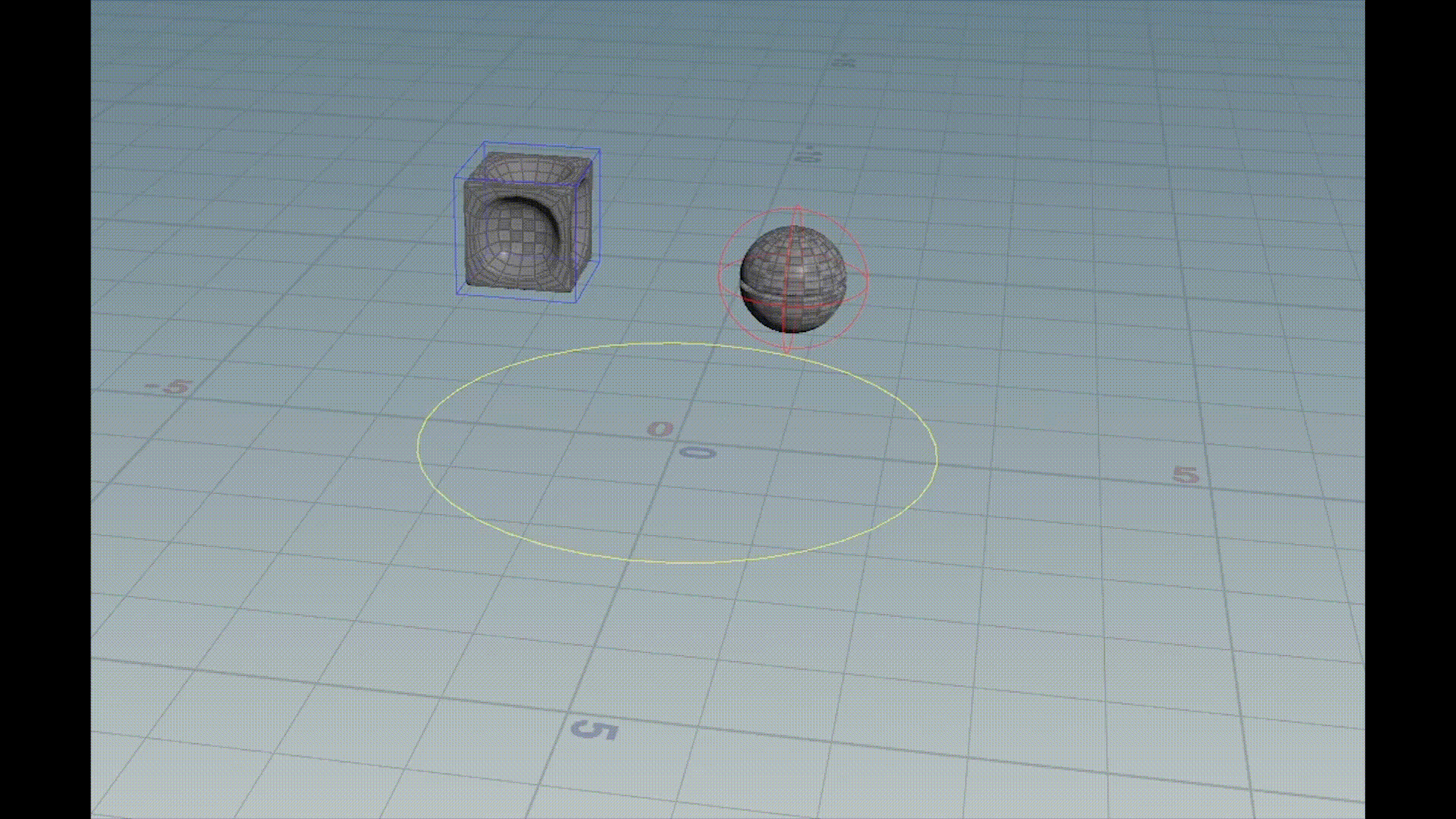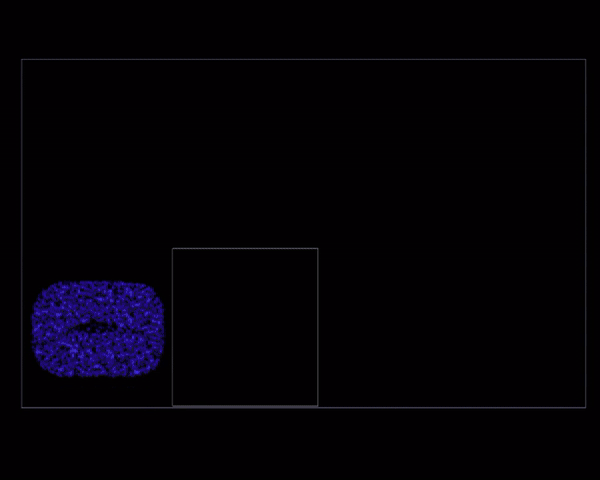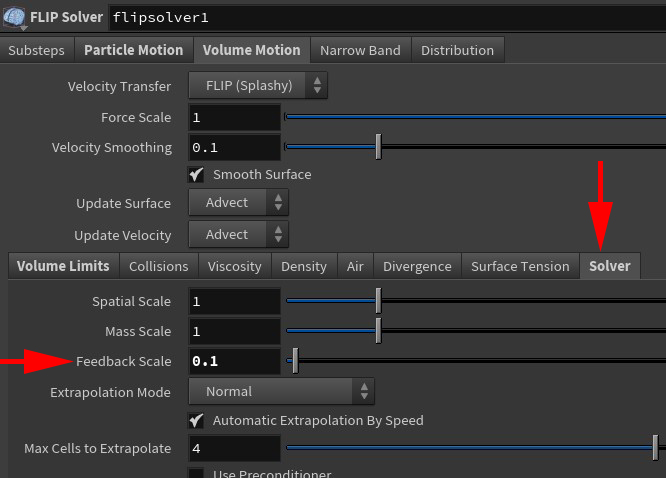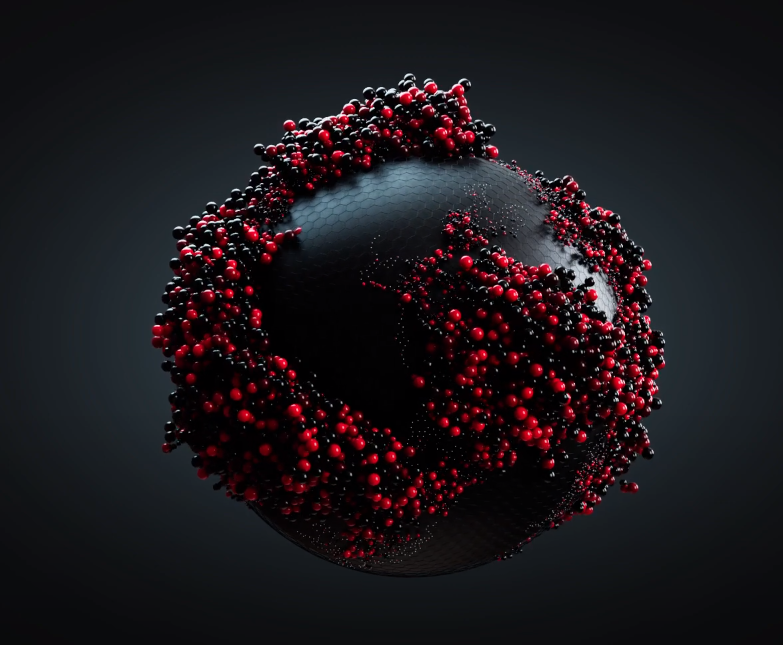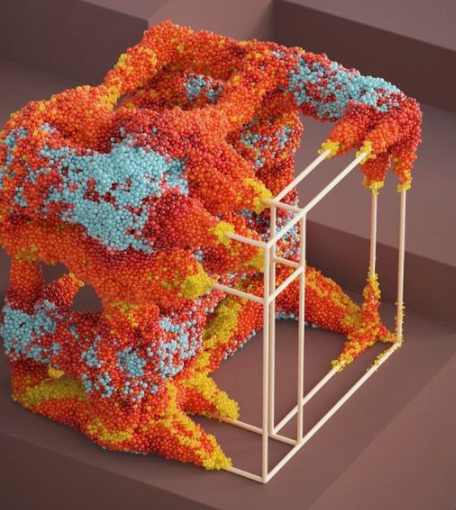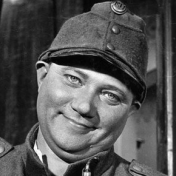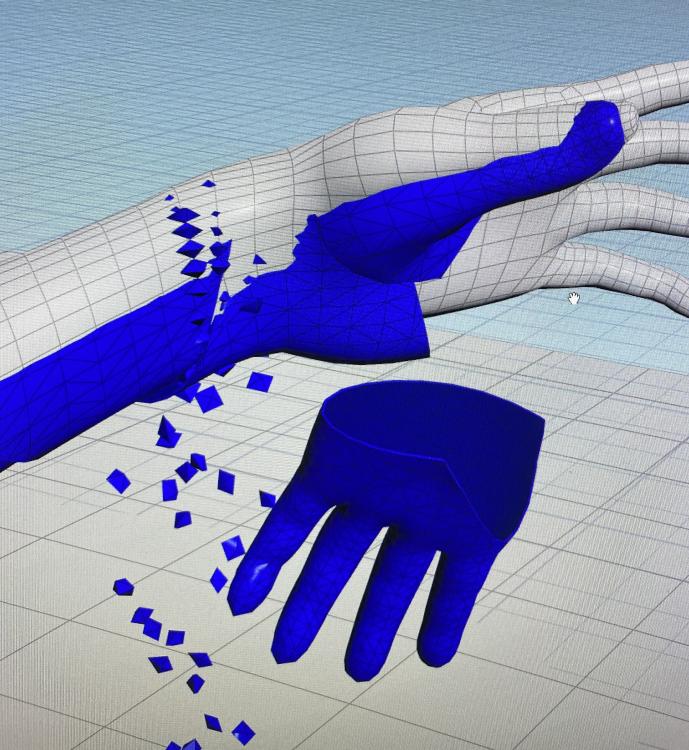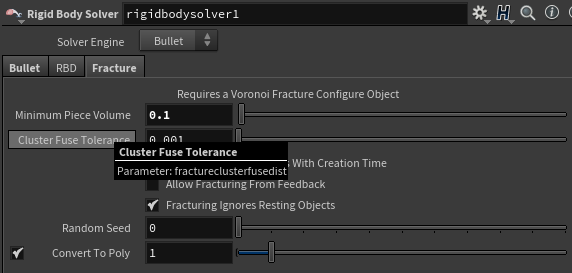Search the Community
Showing results for tags 'rigid body'.
-
Hi guys, I hope you can help me with setting up this vellum inflation scene... Basically, I have animated a sphere expanding and used the rest blend node inside the vellum solver to inflate the sphere. What I would like to achieve is an interaction where the vellum inflation sim interacts with a rigid body 'plinth' that it is initially sitting on rather than it just being a static collider object. I have tried using the vellum shape match constraint for this behaviour but have found it tends to deform the shape which is not ideal. Preferably, I would like to know if it is possible to use RBD dynamics inside of a DOP network and have that interact with the inflating vellum sim... The entire sim would also sit inside of a static container too as the plan is to squash the vellum soft body against the walls of the container. Any help on this would be really appreciated. Thanks! Vellum_Rigid_Body_Interaction.hiplc
- 1 reply
-
- rigid body
- cloth
-
(and 4 more)
Tagged with:
-
Donuts & Cupcakes! What? This is the theme of my new 3D animation [V2] of dominoes falling down! The goal? Have fun and training my skills in 3D simulations under Houdini v18! Technical details : - Houdini 18 -> Modeling, textures of Cupcakes and Donuts, rigid body dynamics simulations, placement and cameras paths. - Blender 2.83.1 -> Textures, lights and rendering with Cycles, because Houdini's mantra is really too slow to calculate ... Now enjoy it and leave me likes and comments, it's always a pleasure !! Here : https://www.youtube.com/watch?v=0sFKkirxTbk
- 35 replies
-
- domino
- simulation
-
(and 2 more)
Tagged with:
-
As you can see in the image below. If the rigid body is on the left side of the merge node the rigid object doesn't obey the force of the flipfluid and if the rigid body is on the right side the behavior is odd. what's the correct workflow?
- 4 replies
-
- flip affect rigid body
- rigid body
-
(and 3 more)
Tagged with:
-
Hi guys In a simple rigid-body simulation, I set the "Active" attribute of my animated object from 0 to 1. How can I limit the inherited velocity (v@w, torque) of rigid body objects? I mean I don't want them to spin and rotate after becoming rigid body! Thanks for helping. RBD_Animate_01.hip
- 2 replies
-
- rigid body
- spin
-
(and 2 more)
Tagged with:
-
I'm trying to get these two objects to move towards each other after they hit the ground. Blend solvers are being used to allow the objects to transition between their keyframed positions and dynamic states and I need to add an attractive force which is what the spring constraint is supposed to be for. If I plug it in and doing nothing to it outside of hooking up the constrained object and the goal object it works fine. However, I want to control the timing of it so it can work it into an animation. When I tried to keyframe the spring strength or activation parameters the constraint would stop working or not work properly. Result from keyframing the activation parameter. The objects do not pull towards each other, the constraint just keeps them in place. Node network Does anyone know why this is happening? Thanks in advance!
-
- dops
- rigid body
-
(and 7 more)
Tagged with:
-
Hello I would like to create a Fluid-RBD interaction. But as you can see in the image below, the fluid pushes the rigid body so strongly. I need the rigid body to be a little bit heavy and to float on the fluid, based on its mass attribute. (Decreasing the "Feedback Scale", didn't help). Thanks for helping. RBD-FLIP Interaction_01.hip
-
I`m currently testing with vertex animation texture and i want to walk around on fractured pieces using my character but it seems not working. is there any way to make this possible? Vat seems like moving meshes but seems like collision position is not applied.
- 1 reply
-
- rigid body
- unreal engine
-
(and 3 more)
Tagged with:
-
Hi everyone ! I'm having issues with the voronoi fracture on concave geometry. I'm trying to fracture a pillar which was created in C4D. To do so, I create a VDB and scatter points in it, then I use the Voronoi Fracture SOP on the base geometry. It works quite well overall, however on some curved concave areas the voronoi fracture fills the area, which I would like to avoid. I attached images to the post; on the second picture the darker parts of the fracture fill the hollow space. Does anyone know how to fix this issue ? Thanks ! PS I have not attached the .hip file since it's based on a heavy alembic file, but I can do so if necessary.
-
Hey guys. am recently decide to use houdini as a 3D package and i have an issue in a rigid body simulation. The problem is: i have a chain ring that should drop on the floor and after dropping all ring chains should interact with each other. at this moment when i drop chain ring, all chain parts just dropSide Effects Houdini 2021.02.26 - 00.18.55.01.mp4Side Effects Houdini 2021.02.26 - 00.18.55.01.mp4Side Effects Houdini 2021.02.26 - 00.18.55.01.mp4Side Effects Houdini 2021.02.26 - 00.18.55.01.mp4 and don't interact with each other, they interact only with floor is that possible to make all chain parts collision object? Side_Effects_Houdini_2021_02.26_-_00_22.09_02.mp4
-
- rigid body
- collision
-
(and 2 more)
Tagged with:
-
Check out the full course at https://www.cgforge.com/course/destruction-iii Cheers!
-
- 1
-

-
- rbd
- destruction
-
(and 1 more)
Tagged with:
-
Hello, I have been making several attempts to accomplish something like Matt Taylor's Seeds concept https://youtu.be/vUvEy37LhqE I have tried a couple of approaches including using a multi-solver but no luck. would really appreciate any input that helps! Motion_Graphics_Designs_By_UK_Based_Artist_Matt_Taylor.mp4 Houdini_Vellum_growth.mp4 Spheres_growth_v001.hip vellum_grains_growth_v004.hip Spheres_growth_v002.hip
-
- 1
-

-
- rbd
- rigid body
-
(and 1 more)
Tagged with:
-
Hello, Houdini folks! I have a question about very essential thing durring the rbd simulation. (Im attaching the file here). What I have, I want to change the scale of the pighead, durring the simulation, but without this "strange jumping" behaviour. Any suggestions, how to solve? Thank you so much. strange_behavior.hip
- 2 replies
-
- rigid body
- scale
-
(and 2 more)
Tagged with:
-
hey guys i am having a little bit of an issue with this test. i picked up this setup from another thread on this forum however in this particular scenario it doesn't seem to work as i am probably missing something. basically the pieces getting activated and falling, do not collide with the inner shrunk body volume i created and - since i am a houdini newbie - i am struggling to figure this out tried to change geometry representation to concave, tried to increase resolution of colliders, but nothing worked so far. i'd be really grateful if anyone could suggest a possible solution. here's HIP and assets in case you want to have a look. https://www.dropbox.com/s/eush4f5hus2uhwy/fracturing%20animated.zip?dl=0 thank you in advance.
- 22 replies
-
- rdb
- bullet solver
-
(and 2 more)
Tagged with:
-
Hello everyone! This is the first demo of a new tool I've been working on in Houdini. The idea is to simplify the process of adding steel reinforcement in concrete fractures, specifically FRC (fiber reinforced concrete) My aim is to produce a single node that takes your simmed geometry and adds these steel fibers along the fractured surfaces. Here are some examples of my tool so far: password = vfx Current controls: - max fiber length - randomize fiber length - max angle (before fiber breaks from the adjacent piece) Things I plan to add: - randomize max angle - fragments of concrete stuck to fibers (as seen in example video below) - fiber straightness (how straight/crooked the fibers are) If you have any cool ideas or suggestions, or feedback on my work so far, let me know! (The idea was inspired by the following breakdown video at 2:39)
- 2 replies
-
- 3
-

-
- reinforced
- r&d
-
(and 9 more)
Tagged with:
-
Hi, I was just trying to replace my pieces with hi quality instancing but it gives different geometry in Rigid body Simulation? Could you please guide me where did I miss MANY THANKS PREM wall rbd sim v7.hipnc
-
- dynamics
- instancing
-
(and 1 more)
Tagged with:
-
Can anybody help me with a method of using the rbd material fracture node and run it through the destruction cleanup tool in Houdini 17? I just need to understand how to provide the correct data to the cleanup tool to get it to work properly. I am just looking for the most basic setup because I cannot get it to work in any situation. The goal is to export an optimized destruction sim to unreal. I have done fractures in 16.5 and successfully ran them through the cleanup tool, but with Houdini 17, I am running into problems with it. I am providing a file where I am stuck. H17_DestructionStarter.hip
-
- destruction
- rbd
-
(and 2 more)
Tagged with:
-
Hey! I have a bunch of pieces from a fractured geo, and I plug them into a rbd bullet sim. I have very big and very small pieces, which is fine, but the problem is that if I let the rbd packed object to calculate the mass obviously I get very different mass result (and that is absolutely correct), but you know, sometimes we don't want exactly the real thing so is there any way of fit the mass so after is calculated I can fit it to more suitable values? I was trying to find a way of setting the mass in the fractured pieces and turn off the calculation in the rbd packed object, but I'm not sure if there's a way of calculating the mass at sop level... thanks!
- 9 replies
-
- rigid body
- mass
-
(and 1 more)
Tagged with:
-
As I'm just starting to understand quaternions and orientation in Houdini, I'm not sure how complicated this is to achieve. I could be completely over thinking it. Ultimately I would like to create a force in dops to rotate the packed object to its current direction of motion, or it's velocity. Modifying @w seems to be the best way to do that. For a first step, I'm trying to make a setup that takes a rbd packed object and rotate it back to it's original orientation. While it technically does that, it doesn't do it logically. It flips around its axis in bizarre ways. As I understand, it's behaving erratically because it's trying to rotate around all of its axes at the same time. This is the code I'm using in a pop wrangle node: vector qToE(vector4 q_value){ float q_0 = q_value.w ; float q_1 = q_value.x ; float q_2 = q_value.y ; float q_3 = q_value.z ; vector out = {0,0,0} ; out.x = atan2(2*(q_0*q_1+q_2*q_3), (1-2*(q_1*q_1+q_2*q_2))) ; out.y = asin(2*(q_0*q_2-q_3*q_1)) ; out.z = atan2(2*(q_0*q_3+q_1*q_2), (1-2*(q_2*q_2+q_3*q_3))) ; return out ; } v@euler = qToE(@orient); @w = -v@euler*1*{1,1,1}; This is where I got the quaternion to euler function: I've attached my houdini file to this post. If anyone has any tips, I'd be very happy to hear them! Thanks! orient_rotate_v01.hip
-
two way collision between grains and rigid body
bobbybob posted a topic in General Houdini Questions
Is it possible to create two way collision between rigid body and grains? I am trying to make a simple example where a sphere is dropped down in a container of grains.-
- two way collision
- grains
-
(and 1 more)
Tagged with:
-
Hello, could someone explain to me what this parameter does exactly? What is being sampled for tolerance?
-
- rigid body
- solver
- (and 4 more)
-
Hi, I'm trying to get a rigid body destruction simulation working in Unreal 4 as a vertex animation using the Game Development Tools. I've got it looking pretty good in game now, except some of the pieces tend to randomly flip briefly as they rotate. It usually looks wrong for about a single frame or two. I've seen similar problems in sims from Maya, and it's usually been some sort of gimbal lock or euler problem. I'd usually be able to fix them by turning on unwind curves, applying a Euler filter, or by hand if it was just a few pieces. What is the best way to deal with this in houdini 16, especially with a large number of pieces? Is there a filter I can apply to the animation curves? Also (sorry, I'm still new to houdini), where would I access the animation curves on a file cached sim? Thanks in advance! Brian
-
- ue4
- vertex animation
-
(and 3 more)
Tagged with:
-
Houdini tutorial VOL 01 Houdini Training Package number 1: Educator : Amin Sadeghvand | Software : HOUDINI 15.5 | Level : Medium | Duration : 13 hr | Volume : 4.31 GB| Quality : HD | Language : English . Website
-
This roadblock stemmed from this thread that was started here. I thought, wow, this is awesome, you can do so much - such as fracturing. However, when I tried to just do a very quick "let's see if this works" setup in my DOP network by adding a Voronoi Fracture node; it ignored it. <~This was using a Packed Rigid Body Object (I've attached my scene file without the voronoi node). However, when I switched the Packed Rigid Body out with a Standard Rigid Body object, it fractured. I've been trying different methods to the best of my new abilities to get this to fracture, but I can't find an answer or figure it out. I took Matt Estela's setup from his site posting here and tore it down to it's barest of bones. In short, I'm trying to get the spheres to fracture on impact using the packed rigid bodies that are emitted from the POP Source. Blah, this forum is the best. Thanks for any help you can give. fracture_test.hipnc
- 10 replies
-
- packed
- rigid body
-
(and 2 more)
Tagged with:
-
Hi everyone! I'm relatively new to Houdini, and I came across a tutorial which explained the bullet solver for H13. I am trying to recreate the effect that he got at 53:15, where primitives were deleted from the constraint network when a force over a certain threshold was applied. tutorial: As I understand, the SOP solver was changed in H14, and I therefore don't have the object merge node that he has. I downloaded the example HIP file and copied his node into my own project and managed to get it working, however I'd like to know how it actually works, rather than just copying and pasting! The data that the node is bringing in, is as follows: `stamps("..", "DATAPATH", chsop("relnode") + ":Relationships/" + chs(chsop("relnode") + "/relname") + "/" + chs(chsop("relnode") + "/relationship/dataname") + "/Geometry")` This isn't like anything I've come across so far in houdini - if anyone knows what this means, and could explain it I'd be very grateful! Best, Stephen
- 2 replies
-
- simulation
- rigid body
-
(and 7 more)
Tagged with:
-
Hey everyone,My overall goal is to simulate liquid poured into a glass with ice cubes inside, with the ice cubes floating.Everything works normally until I enable feedback forces: Normal: https://gfycat.com/LameCarelessIzuthrush With feedback: https://gfycat.com/FlashySolidFreshwatereel There's a ton of particle loss. For these sims, particle separation is 0.004, grid scale is 2, feedback force is 1, and max FLIP substeps is 10.The best I got was to maintain volume with 1.75 grid scale, but with overreacting ice cubes: https://gfycat.com/MiserlyEmbarrassedAfricanbushviperI've attached the Houdini file for this below.Anything related to this problem would be helpful. Why is there particle loss, even without reseeding or with many substeps (I've tried using 20)? Is there a problem with how I'm using feedback? Why does changing grid size cause volume to increase or decrease?Thanks! ice-tea-milk_027_017.hipnc
- 2 replies
-
- flip
- rigid body
-
(and 2 more)
Tagged with:


